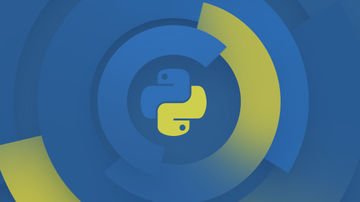本文介绍了Python编程中的变量和数据类型,包括变量的概念、命名规则和使用方法,以及整型、浮点型、字符串类型等多种内置数据类型的特点。此外,文章还详细讲解了不同类型的数据操作和转换,并提供了丰富的示例代码。
1. 变量1.1 变量的概念
变量是编程中的基本概念之一,用于存储数据。在Python中,变量不需要声明类型,直接赋值即可。变量的名称可以由字母、数字和下划线组成,但不能以数字开头。
1.2 变量的命名规则
- 变量名必须以字母或下划线开头。
- 变量名不能是Python的关键字。
1.3 变量的使用
变量的赋值过程如下:
# 赋值给变量
variable_name = value
# 示例
x = 10
y = "Hello, World!"
z = TruePython中数据类型分为内置数据类型和自定义数据类型。本节主要介绍Python内置的数据类型。
2.1 数值类型
2.1.1 整型 (int)
整型用于表示整数,包括正整数、负整数和零。
x = 10 # 正整数
y = -20 # 负整数
z = 0 # 零2.1.2 浮点型 (float)
浮点型用于表示带小数点的数值。
a = 3.14 # 正浮点数
b = -2.71 # 负浮点数
c = 0.0 # 零2.1.3 复数型 (complex)
复数型用于表示复数,由实部和虚部组成。
real_part = 3
imaginary_part = 4
z = complex(real_part, imaginary_part) # 输出 (3+4j)2.2 字符串类型 (str)
字符串类型用于表示文本,用单引号、双引号或三引号表示。
str_single = 'Hello, World!'
str_double = "Hello, World!"
str_triple = """Hello,
World!"""2.3 布尔类型 (bool)
布尔类型用于表示真 (True) 或假 (False)。
is_true = True
is_false = False2.4 列表 (list)
列表是一种可变的数据结构,可以存储不同类型的多个元素。
list_example = [1, 2, 3, "four", 5.0]2.5 元组 (tuple)
元组是一种不可变的数据结构,可以存储不同类型的数据。
tuple_example = (1, 2, 3, "four", 5.0)2.6 字典 (dict)
字典是一种可变的数据结构,存储键值对。
dict_example = {"name": "Alice", "age": 25, "is_student": True}2.7 集合 (set)
集合是一种无序且不重复的数据结构。
set_example = {1, 2, 3, 4}3.1 基本操作
变量的操作包括赋值、读取和修改。
3.1.1 赋值
a = 10
b = 203.1.2 读取
print(a) # 输出 10
print(b) # 输出 203.1.3 修改
a = a + 1
print(a) # 输出 113.2 数据类型的转换
Python 提供了内置函数用于数据类型之间的转换。
3.2.1 int() 函数
转换为整型。
float_value = 3.14
int_value = int(float_value) # 输出 33.2.2 float() 函数
转换为浮点型。
int_value = 10
float_value = float(int_value) # 输出 10.03.2.3 str() 函数
转换为字符串类型。
int_value = 10
str_value = str(int_value) # 输出 "10"3.3 字符串的操作
3.3.1 字符串拼接
str1 = "Hello, "
str2 = "World!"
full_str = str1 + str2 # 输出 "Hello, World!"3.3.2 字符串格式化
name = "Alice"
age = 25
formatted_str = "Name: {}, Age: {}".format(name, age) # 输出 "Name: Alice, Age: 25"3.4 列表的操作
3.4.1 列表切片
list_example = [1, 2, 3, 4, 5]
slice_example = list_example[1:3] # 输出 [2, 3]3.4.2 列表追加
list_example = [1, 2, 3]
list_example.append(4) # 列表变为 [1, 2, 3, 4]3.5 元组的操作
3.5.1 元组不可变性
tuple_example = (1, 2, 3)
# tuple_example[0] = 4 # 会引发 TypeError3.6 字典的操作
3.6.1 字典添加键值对
dict_example = {"name": "Alice", "age": 25}
dict_example["is_student"] = True # 输出 {"name": "Alice", "age": 25, "is_student": True}3.7 集合的操作
3.7.1 集合添加元素
set_example = {1, 2, 3}
set_example.add(4) # 输出 {1, 2, 3, 4}4.1 变量的综合使用
# 定义变量
age = 25
name = "Alice"
is_student = True
# 输出变量
print("Name:", name)
print("Age:", age)
print("Is Student:", is_student)
# 修改变量
age += 1
print("Updated Age:", age)4.2 数据类型的转换示例
# 浮点数转整数
float_value = 3.14
int_value = int(float_value)
print("Float to Int:", int_value)
# 整数转浮点数
int_value = 10
float_value = float(int_value)
print("Int to Float:", float_value)
# 整数转字符串
int_value = 25
str_value = str(int_value)
print("Int to String:", str_value)4.3 字符串的操作
# 字符串拼接
str1 = "Hello, "
str2 = "World!"
full_str = str1 + str2
print("String Concatenation:", full_str)
# 字符串格式化
name = "Alice"
age = 25
formatted_str = "Name: {}, Age: {}".format(name, age)
print("String Formatting:", formatted_str)4.4 列表的操作
# 列表切片
list_example = [1, 2, 3, 4, 5]
slice_example = list_example[1:3]
print("List Slicing:", slice_example)
# 列表追加
list_example = [1, 2, 3]
list_example.append(4)
print("List Append:", list_example)4.5 元组的操作
# 元组不可变性
tuple_example = (1, 2, 3)
try:
tuple_example[0] = 4
except TypeError as e:
print("Tuple Modification Error:", e)4.6 字典的操作
# 字典添加键值对
dict_example = {"name": "Alice", "age": 25}
dict_example["is_student"] = True
print("Dictionary Update:", dict_example)4.7 集合的操作
# 集合添加元素
set_example = {1, 2, 3}
set_example.add(4)
print("Set Add Element:", set_example)本篇文章介绍了Python中的变量和数据类型。变量是存储数据的基本单位,Python中的数据类型包括整型、浮点型、复数型、字符串类型、布尔型、列表、元组、字典和集合。通过示例代码,我们展示了如何使用这些数据类型,并展示了基本的操作和转换。希望这些示例能够帮助你更好地理解Python中的变量和数据类型。

 随时随地看视频
随时随地看视频




